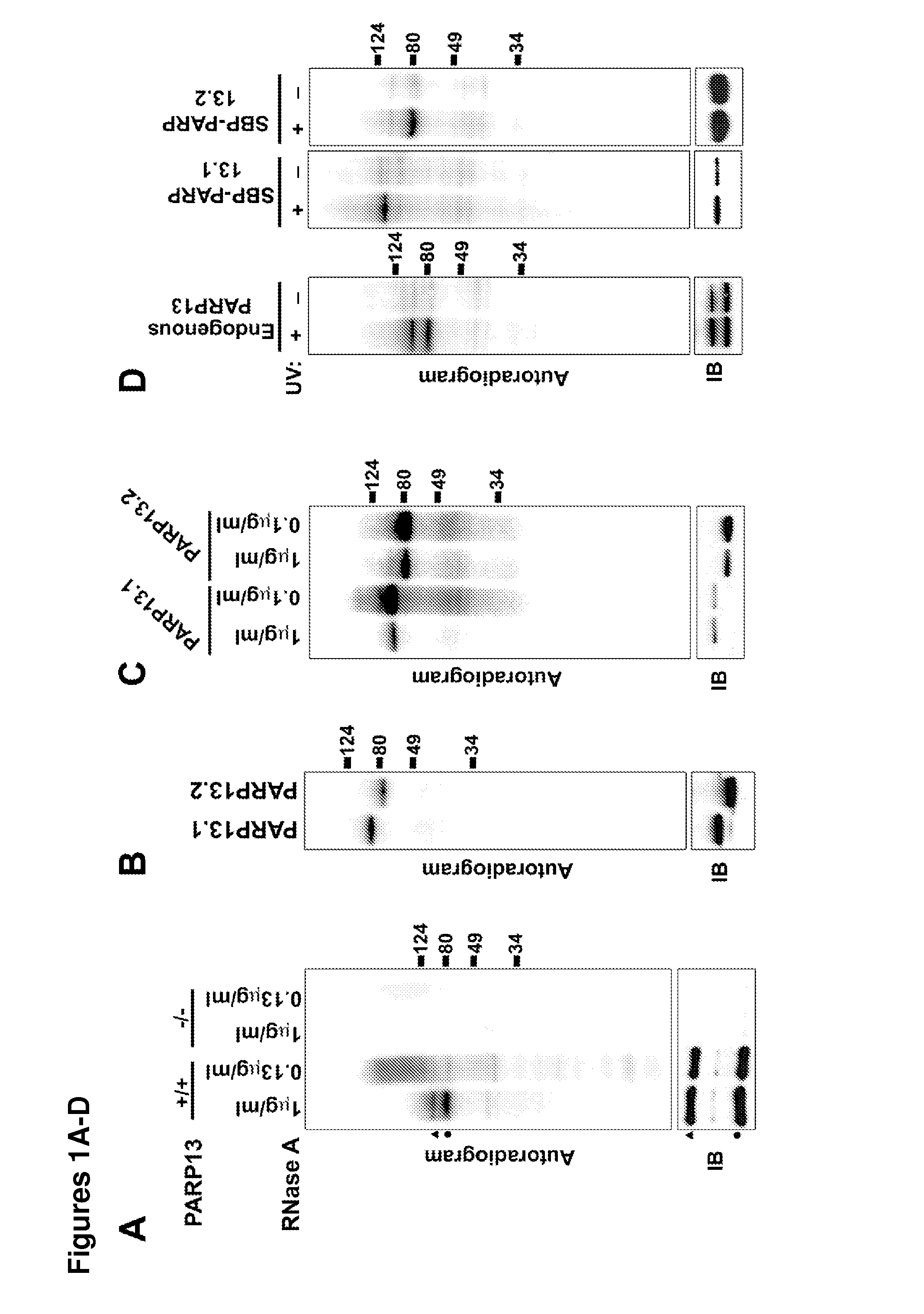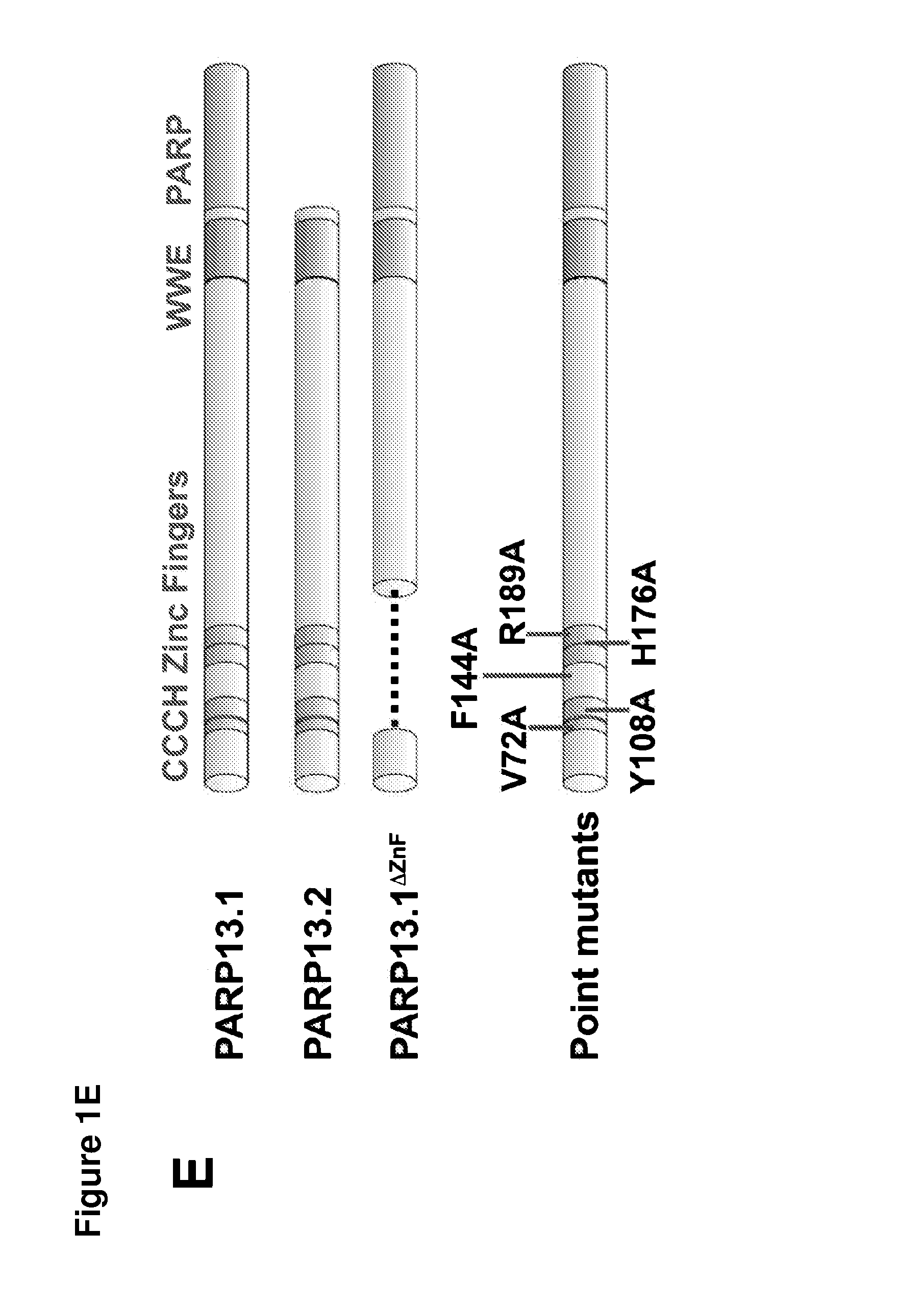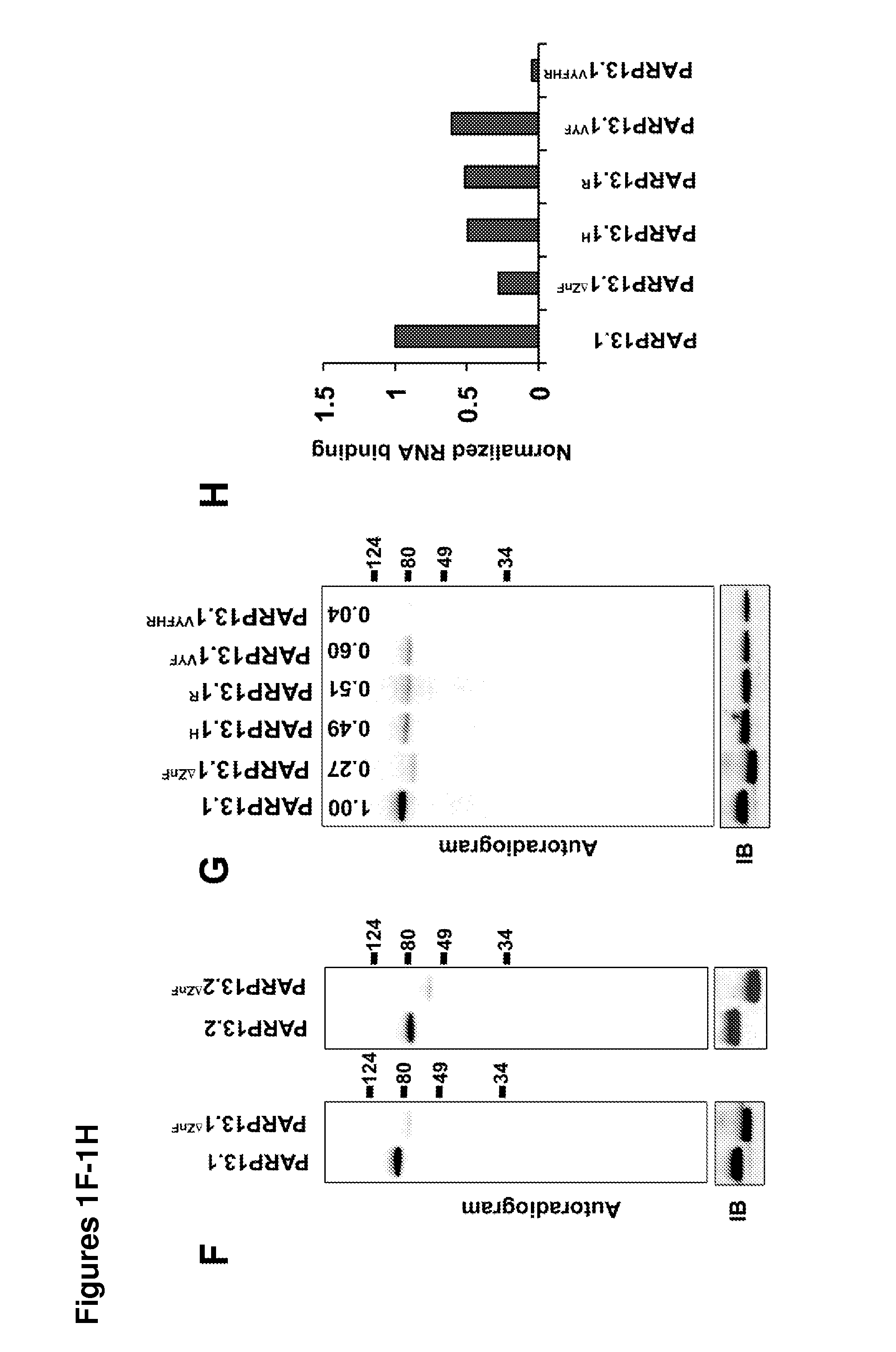Compositions and methods for treating immune and viral disorders and modulating protein-rna interaction
a technology of proteinrna and immunodeficiency virus, applied in the field of molecular biology and molecular medicine, can solve the problems of disease conditions, high levels of transcripts and proteins, etc., and achieve the effect of decreasing the likelihood of developing a disorder
- Summary
- Abstract
- Description
- Claims
- Application Information
AI Technical Summary
Benefits of technology
Problems solved by technology
Method used
Image
Examples
example 1
PARP13 Binds to Cellular RNA
[0168]To determine if PARP13 binds to cellular RNA, crosslinking immunopreciptation (CLIP) in HeLa cells using affinity purified PARP13 antibody was performed. A strong signal from bound, crosslinked RNA that collapsed to two major bands at high RNase concentrations was identified (FIG. 1A). The collapsed signal migrated at the molecular weight of PARP13.1 and 13.2, and was PARP13-specific since it was not detected in similar purifications performed in PARP13− / − HeLa cell lines generated using zinc finger nucleases (FIGS. 1A and 9). Since PARP13.1 and PARP13.2 are constitutively expressed in HeLa cells, the binding of cellular RNA to each isoform using N-terminal streptavidin-binding protein (SBP) fusions was compared. SBP-PARP13.1 and SBP-PARP13.2 bound similar amounts of RNA and the signal for both was RNAse sensitive confirming the attached molecules as RNA (FIGS. 1B and 1C). For both the endogenous PARP13 and the SBP precipitations no signal was ident...
example 2
PARP13 Regulates the Transcriptome
[0171]To determine if PARP13 regulates cellular RNA the transcriptome was analyzed in the absence of PARP13. Agilent microarrays were used to compare the relative abundance of transcripts in HeLa cells transfected with control siRNA to cells transfected with PARP13-specific siRNA (FIG. 3A). Depletion of PARP13 resulted in significant misregulation of the transcriptome with 1841 out of a total of 36338 transcripts analyzed showing >0.5 Log 2 fold change (Log 2FC) relative to control knockdowns (1065 upregulated and 776 downregulated transcripts). Of these, 85 transcripts exhibited Log 2FC>1 relative to control siRNAs (66 upregulated and 19 downregulated). In total 73 transcripts passed a significance threshold of p<0.05 (moderated t-statistic with Benjarnini Hochberg adjustment) (Table 9).
[0172]The 50 upregulated transcripts with a p-value Nature protocols 4:44-57 (2009)), Enrichment Score 3.4, p-valueProceedings of the national Academy of Sciences o...
example 3
PARP13 Represses TRAILR4 mRNA and Protein Expression
[0175]Due to its biological importance and the clinical interest in TRAIL the role of PARP13 in the regulation of TRAILR4 expression and how that regulation might impact TRAIL signaling and apoptosis was examined. Upregulation of TRAILR4 mRNA in PARP13-depleted HeLa cells had a direct effect on TRAILR4 protein expression: TRAILR4 protein levels, barely detectable in wild type HeLa cells, increased in PARP13 knockdown cells and in all three independently isolated PARP13− / − cell lines (FIGS. 4A and 4B). In addition, consistent with the results identifying TRAILR4 as a direct target of PARP13 regulation (FIGS. 3E and 12), expression of PARP13.1, but not PARP13.1VYFHR, in PARP13− / −A cells was sufficient to reduce TRAILR4 protein expression (FIG. 4C). PARP13 repression of TRAILR4 mRNA represents a general mechanism of TRAILR4 regulation in multiple human cell types. In all cell lines tested, including primary cells such as Tert immortal...
PUM
| Property | Measurement | Unit |
|---|---|---|
| Electrical resistance | aaaaa | aaaaa |
| Permeability | aaaaa | aaaaa |
Abstract
Description
Claims
Application Information
 Login to View More
Login to View More - R&D
- Intellectual Property
- Life Sciences
- Materials
- Tech Scout
- Unparalleled Data Quality
- Higher Quality Content
- 60% Fewer Hallucinations
Browse by: Latest US Patents, China's latest patents, Technical Efficacy Thesaurus, Application Domain, Technology Topic, Popular Technical Reports.
© 2025 PatSnap. All rights reserved.Legal|Privacy policy|Modern Slavery Act Transparency Statement|Sitemap|About US| Contact US: help@patsnap.com



